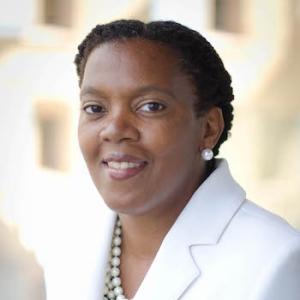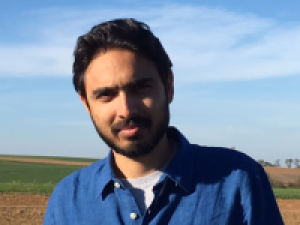Resources

In late May 2021, a shocking revelation made the news. The T’Kemlúps te Secwépemc First Nation announced that evidence was found using ground-penetrating radar of 215 unmarked graves of Indigenous children on the grounds of a former church-run residential school to which Indigenous children were sent as mandated by the Canadian government. Since then, hundreds of other unmarked graves of children and youth at other residential school sites have been found. These were educational institutions from which students emerged as “survivors” rather than “graduates.” They were institutions characterized as perpetuating “cultural genocide” aimed at wiping out Indigenous cultures, beliefs, and languages. The first opened its doors in 1828 and the last closed in 1996. The horrific findings at T’Kemlúps and other sites of former residential schools provided further evidence of the abuse suffered by generations of Indigenous children as documented in the Truth and Reconciliation Commission on Indian Residential Schools which ran from 2008 to 2015 in Canada. To lose one’s life as a student at an educational institution staffed by adults entrusted with care, many of whom were priests and nuns, is the ultimate in betrayal of trust. The revelation of these deaths of Indigenous children and youth prompted me, as a religious studies professor, a woman of Caribbean heritage and descendant of enslaved Africans living and working in Turtle Island/North America, to reflect on the broader history of what “education” in the twenty-first century means and my role as an educator. Given the legacy of church-based institutions in the education of enslaved, indentured, and colonized peoples during the colonial era, emerging untouched as a disembodied learner is impossible. What challenges have we inherited as students and educators and what pedagogies can we bring to classrooms as correctives and alternatives, including systems of Indigenous knowledge outlawed during the colonial era? This is an enormous question a thorough answer to which is beyond the scope of this short reflection; however, daring to ask this question is necessary if as educators we are to confront with honesty and integrity the myriad ways in which educational institutions and processes, even those which are well-meaning and couched in terms signifying a commitment to equitable principles, have been complicit in colonial rule. Throughout the British Empire, children and youth were subjected to disciplinary action under colonial rule. Canada’s colonial history as a settler colony in the British Empire and Caribbean nations as a former monocrop economy dependent on the production and sale of sugar and its byproducts are linked. Some children, at various times, were deemed by law and/or custom unmanageable, “truant,” “incorrigible,” “delinquent,” and were subsequently criminalized and in need of “reform,” “training,” or correction by some combination of discipline, punishment, and education. Training schools were instituted in the Caribbean beginning in the post-slavery era, primarily, though not exclusively, for male children and youth. In a Canadian context, as discussed in the documentary Born Bad (CBC, 2021), training schools were instituted in the early 1930s with the final one closing in 1984. These training schools, which predominantly affected white, working-class youth, were total institutions which were supposed to look after the educational and cultural needs of children and youth in a residential setting. The training schools were often located in small towns where children were removed from their families and home communities. In recent years, alleged abuses at former Canadian training schools have come to light with a class action lawsuit pending. In a Caribbean context there is evidence of a shift towards awareness and addressing of factors such as childhood trauma in the lives of children and youth in training schools. What has become increasingly apparent over the last year is that even though unmarked, the burial places of the deceased Indigenous children and youth remained a part of the topography of the physical land and cultural landscape. Secrets of small towns and rural communities in which residential schools and training schools were located are now being revealed to a broader public. In effect, these sites are simultaneously unmarked and marked by their tangible links to individual families and communities. The challenge for religious studies education is to come to terms, honestly, with the legacy of churches (in Canada, the United Church, Roman Catholic and Anglican), mandated by the federal government for over a century to carry out residential school education. The ways in which religious studies is taught could benefit from exploration of these colonial linkages between the Caribbean, Canada, the US, and other former British settler colonies such as New Zealand, Australia, and South Africa. Studying the impact of religious institutions in these geographically distant yet historically-linked areas would require a comparative approach anchored in the experiences of survivors and witnesses revealed through combined methods of historical and archival research and shared oral histories. This endeavour will require collaboration and fortitude but it is a necessary process and one that begins with individual reflections and actions of engaged educators. For information about the Truth and Reconciliation Commission of Canada’s Calls to Action please see: calls_to_action_english2.pdf (gov.bc.ca). For information on contemporary status of incarcerated youth in some English-speaking Caribbean countries see “The Status of Youth in Incarceration in the Caribbean” (2020): FreemonNunoKatz2020.pdf.

On November 8, 2016, I watched Ana Navarro telling ABC News that “there is a White America and there is a Brown and Black America, Chinese America, Muslim America.” Muslims, of course, are white, brown, black, Chinese, and many other things as well, so from a historical standpoint it is surely curious, if nothing else, to see how adherents of a major world religion have been squeezed into the “non-White” umbrella of the American racial classification scheme. Navarro’s comments got me thinking about my own research on Islam in the Soviet Union and the question of how large, cosmopolitan, majority non-Muslim societies have resolved the problem of finding a “niche” for Islam. I see many parallels between the political context of Islam in America today and discussions that took place in the colonial empires in the late-19th and early-20thcenturies. America is not an empire. Yet, like the British, French, and Russian empires, the U.S. is cosmopolitan, multiethnic, multifaith, and hosts a growing and prominent Muslim minority. The British, French, and Russian empires have a legacy of incorporating and dealing with Muslims that our society should be aware of. This legacy should be especially important to anyone teaching or talking about, the history of the modern Islamic world, anywhere. On the one hand, the elites of these empires, like many members of the American elite today, were firmly convinced of the inherent fanaticism and insularity of Islam, though they disagreed vehemently on whether such fanaticism stemmed from Islamic dogma (whatever that might be), or the historical and cultural circumstances of Muslim societies. The fact that these elites were Christian, secular, or some combination of the two, obviously colored their views about Islam, but so did the reality that their geopolitical interests placed them in an adversarial relationship with large swathes of the Islamic world. On the other hand, there was a vital and compelling need to extend Muslims some sense of belonging in the polity. Across the 19th century, the British, French, and Russians all sought to institutionalize Islam through the patronage of religious scholars, foundations, and shrines, and through various attempts to codify or otherwise make sense of Islamic law. With the right kind of interference, it was hoped, Islam could be civilized into a form that would make it worthy of inclusion and protection in the imperial framework. Why does this legacy matter in today’s college classroom? It is only a small overstatement to say that the current liberal/conservative impasse about Islam is a reiteration of an old colonial debate. Take, for example, the comments of Newt Gingrich who stated that “sharia is incompatible with Western civilization. Modern Muslims who have given up sharia—glad to have them as citizens.” It is perhaps fitting that Gingrich has a Ph.D. in history—though I realize I’m giving him too much credit here—because these two sentences are a crude restatement of the old colonial accommodation with Islam: join the imperial polity, but for God’s sake, practice the kind of Islam that you can show up to the Club with! In my classes on 20th-century history, which focus heavily on Muslim countries such as Afghanistan and Iran, we do not regularly discuss American politics or current events. We do, however, talk a lot about colonialism, and I try to make my students see the past through prisms that are relevant to their own lives. As it turns out, this has been relatively easy when it comes to the relationship between Islam and the state.

In this blog, I want to continue with the theme that animated my last post “Genealogically Attuned teaching in an Introductory Course on Islam.” To remind, the question I had engaged had to do with the problem of presenting in an undergraduate amenable fashion theoretical insights from the study of religion and the broader humanities. My investment in this question derives from the problem of how one might make in an introductory course on Islam theoretical arguments commonly advanced in humanistic scholarship through strategies that bypass the density of scholarly theoretical discourse. In other words, how to do theory in an introductory course without subjecting students to theory pressure? The last blog dealt with some challenges and prospects for the first day of an Introduction to Islam class by way of some reflections on interrogating the category of religion. Here I wish to briefly think about this problem in relation to more specific thematic units of such a course. First a brief description of the conceptual problem I want to think through here. One recurrent tendency I have observed among students is to regard phenomena such as colonialism and orientalism as historical events consigned to a safely distant past, as belonging to the 19th century neatly separated from their own present. How could this problem of assumed shelter from the violence of colonial pasts and their attached knowledge legacies be addressed in an Introduction to Islam course? How could the persistence of the shadows of colonial power be impressed upon students? The first day of a unit on Sufism presents a potentially profitable moment for such a task. The unit on Sufism (for thematically organized introductory courses) represents a highly rewarding yet challenging stop on the pedagogical itinerary. While providing excellent possibilities of close primary source reading, use of narrative, textual and audio-visual analysis, the danger that students will fall prey to the temptation of viewing Sufism as the stereotypical exotic or eccentric variety of Islam is always all too ripe. The first day of the unit on Sufism can also do some important conceptual work on the interaction of colonialism, orientalism, and Islam precisely by tackling major commonplace stereotypes about the Sufi tradition. As an illustration, let me share some highlights from a lesson plan for this day that I have frequently employed in my intro course. The goal of this class session is to make students think critically about the legacy of colonial knowledge production and Orientalism in the study of Sufism and Islam more broadly. This we try doing by focusing on 19th century Orientalist stereotypes about Sufism and their continuation in contemporary popular discourses on the subject. In a nutshell, some of these stereotypes include: 1) that Sufism is foreign to Islam with Greek, Indic, or Persian origins, 2) that Sufism is opposed to Islamic law and that Sufis don’t care about normative legal obligations, and concomitantly 3) that while Sufism is the exotic, soft, and liberal brand of Islam, Islamic law or the Shari‘a is its harsh, puritan, illiberal other. One can fruitfully show the effects of these Orientalist stereotypes in the present by juxtaposing film with text. More specifically, for this day, I combine discussion on the first chapter of Carl Ernst’s Shambala Guide to Sufism (which they read before class) with the in-class viewing of the first twenty minutes or so of the 1994 documentary I am a Sufi, I am a Muslim. The more recent documentary Sufi Soul by popular writer William Dalrymple is also a good alternative that serves the purpose. In small group discussions, I have students identify and make a list of stereotypes about Sufism in the works of various 18th and 19th-century European Orientalists and colonial officials (such as Tholuck, Elphinstone, Graham) as presented in the Ernst text. As student discussions are winding down, I pop in the documentary. I then ask them to make a note and a running list of any overlap between the Orientalist stereotypes they just discussed and ways in which the narrator of the documentary describes Sufism. The overlap is astonishing. Almost all Orientalist depictions (Sufism has non-Arab origins, it is opposed to ‘orthodox’ Islam, Sufis don’t prioritize ritual practices etc.) are repeated almost verbatim in the documentary. This conglomeration of textual and visual evidence invites students to reflect on traces of powerful 19th century discursive regimes on a popular and seemingly sympathetic documentary a century later. Film and text complement each other, the former amplifying the argument of the latter about the Orientalist reformulation of Sufism. But this much is not enough. In addition to uncovering the problems and persistence of Orientalist narratives about Islam and Sufism, it is also important to have students address the question of how Sufis themselves understand their tradition, especially in regards to Sufism’s relationship with Islamic law. For this, we again turn to the Ernst chapter, especially page 26 that details Sufis’ self-imagination of their tradition in clear, concise, and singularly productive ways. By reading relevant passages aloud in class, we establish the point that in contrast to 19th century Orientalist and contemporary popular stereotypes, the relationship between Sufism and law within the tradition is hardly understood in the form of an oppositional binary. Rather, this relationship is imagined as a hierarchy whereby abiding by the law and its limits represents a prerequisite to progress on the path to divine reality. This hierarchical arrangement is reflected in the rhyming progressive (in a literal sense) formula Shari‘a (divine normative order)-Tariqa (the Sufi path)-Haqiqa (divine reality). Put simply, Sufis do not reject the law and its imperatives. They instead consider it a first step towards higher spiritual refinement. A hierarchy is not the same as a binary. Through this class session, some highlights of which I have outlined above, students in an introductory course can be equipped to interrogate the afterlives of colonial power and Orientalist discourse in the present without being burdened with the weight of prohibitive theory talk. It can also attune them to ways in which a more careful consideration of the logics and textual resources within a tradition can disrupt popular stereotypes and representations about it. Genealogical skepticism is thus usefully complemented with discursive analysis.

Eren Tasar Assistant Professor University of North Carolina at Chapel Hill As a trend in twentieth-century world history, decolonization is a major topic in any class dealing with modern Muslim societies. This mundane fact comes as a surprise to some of my students, however, for reasons that I can illustrate.